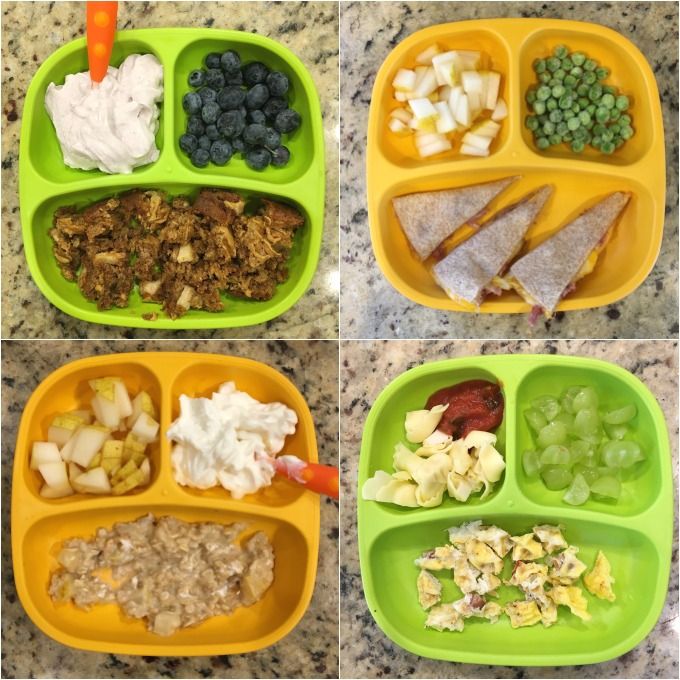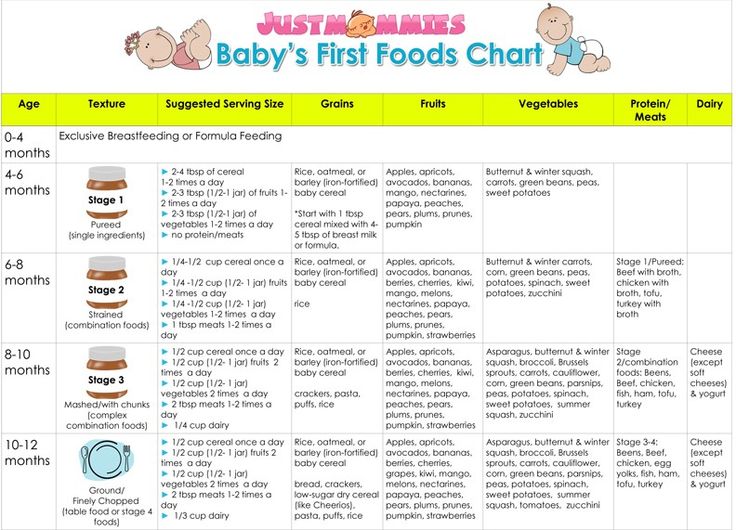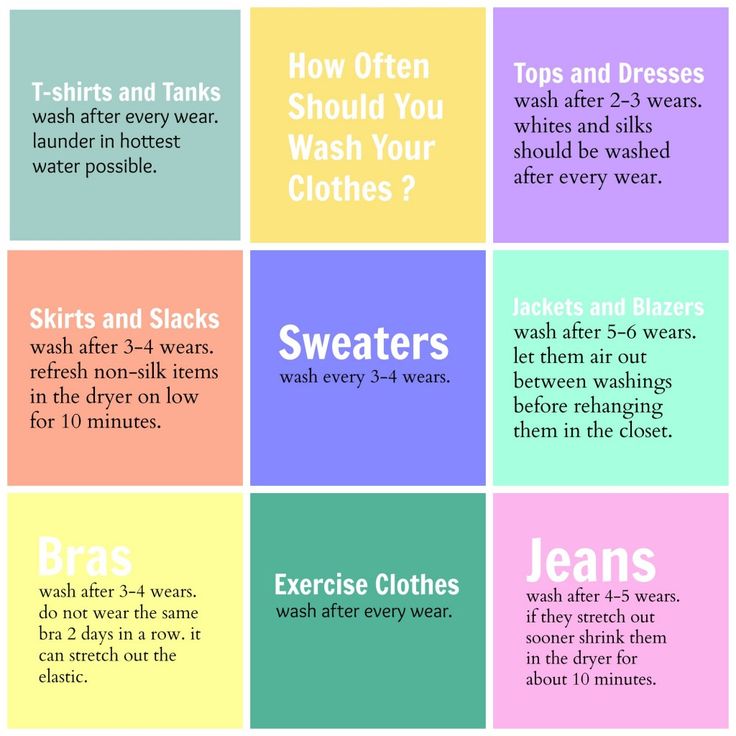Steps to feed a baby
How to Bottle-Feed a Baby
Whether you’re breastfeeding, formula-feeding or doing a combination of both, chances are you’ll eventually use a bottle with your infant. No big deal, right? But while images of a parent blissfully holding a bottle make the process look easy, there’s a learning curve when it comes to proper bottle-feeding. Here, everything you need to know about how to bottle-feed a baby safely and happily.
In this article:
How to choose the right bottle and nipple
How to make a baby bottle
Best bottle-feeding positions
What is pace feeding?
How to get baby to take a bottle
When to wean baby off the bottle
How to Choose the Right Bottle and Nipple
When it comes to figuring out how to bottle-feed a baby, selecting an appropriate bottle and nipple is step one. If people gifted you a bunch of bottles at your baby shower, you may want to hold off before opening and sterilizing them until baby is born, or at least take out just a few to try in the early days of feeding. Why? Because you won’t know what kind of bottle is best until you figure out what baby’s feeding needs are.
“Certain bottles work better for certain babies,” explains Jamie O’Day, BSN, RN, CLC, a registered nurse, certified lactation consultant and cofounder of Boston NAPS, a pre- and postnatal resource center in the Boston area. “For example, some babies who have issues with gas may do better with a bottle that has a filtration system, like a Doctor Brown’s style bottle, while babies who are used to being breastfed may have more success drinking from a bottle that aims to mimic the shape and feel of a mother’s breast, like the Comotomo.”
That said, O’Day has a universal tip for all parents: Look for a bottle that’s easy to take apart and clean. That generally means a nice wide neck and the fewest parts possible. “Proper cleaning is so important, so I always tell parents to choose the simplest bottle, which may just have a nipple, bottle and collar,” she says. If your child seems happy and easily takes the bottle, then there’s no need to switch.
Of course, it’s not just the bottle that you have to consider. It’s also important to pay attention to the flow of the nipple, which varies based on infant age. Generally speaking, young babies need a slower flow, while older babies who’ve mastered the art of bottle-feeding can handle a faster flow. The nipple may be called “slow flow,” “medium flow” or “fast flow” or may be numbered from one to three, with one being the slowest flow. There is no standard of flow between different brands, but most newborns should begin on level one or slow flow.
So how can you tell when it’s time to change the nipple size? That depends. Some infants happily use the same flow nipple throughout their infancy, while others may need a faster flow nipple. “If you notice your child taking a long time to finish a bottle, or losing interest midway through feedings, a faster flow nipple may be needed,” O’Day says, adding that this might happen at around 3 or 4 months of age, with another potential upgrade around 6 or 7 months.
If your infant finishes a bottle quickly (say, under five minutes), seems gassy or cranky, or spits up a lot of milk right after feedings, it may be time to go back to a slower-flow nipple. Your pediatrician can also help determine if it may be time to switch the flow of the nipple.
How to Make a Baby Bottle
If you’re wondering how to bottle-feed a baby, you’re probably new to prepping baby bottles. Take a new skill, add in sleep deprivation and sprinkle in some very real safety concerns and you’ve got the somewhat daunting process of making a baby bottle (at least at first). Don’t despair. By reading directions, following the advice of a pediatrician and making sure to err on the side of caution, you’ll get the hang of it in no time.
How to make a baby bottle with formula
Baby formula comes in three different forms: ready-to-feed, concentrate and powder. The Centers for Disease Control and Prevention (CDC) recommends that babies under 3 months start off with ready-to-feed formula because of the small but real risk of cronobacter, a bacteria that can live in powdered infant formula.
• Preparing ready-to-feed formula: These require very little prep, since they come ready to be poured into a bottle and fed to an infant. Some ready-to-feed formulas come in bottles that can accomodate disposable nipples—all you need to do is screw a nipple on, feed and discard.
• Preparing concentrate formula: To prepare a baby body with this liquid formula, you’ll need to add water. It’s important to read the directions to learn the right ratio of water to concentrate. As for what type of water should you use, that depends on where you live, your pediatrician’s recommendation and your own wishes. If your tap water is safe, feel free to use it—just run it for several minutes before you fill the bottle to remove any trace contaminants in the water. You can also use filtered water, bottled water or boiled (and cooled) tap water.
• Preparing powdered formula: Just like concentrate, it’s important to follow directions on the right ratio of scoops of powder to ounces of water, says Carmen Baker-Clark, an International Board Certified Lactation Consultant (IBCLC) in Hoboken, New Jersey. When using powdered formula, make sure to shake well so the liquid isn’t clumpy. “Some parents notice powdered formulas may make their infant more gassy, more prone to spit-up or more constipated. A lot of this is due to the bottle preparation. For example, not shaking enough can create uneven consistency that may be harder for baby to digest,” Baker-Clark explains.
When using powdered formula, make sure to shake well so the liquid isn’t clumpy. “Some parents notice powdered formulas may make their infant more gassy, more prone to spit-up or more constipated. A lot of this is due to the bottle preparation. For example, not shaking enough can create uneven consistency that may be harder for baby to digest,” Baker-Clark explains.
Regardless of what kind of formula you choose, Baker-Clark recommends sticking with the same brand or being deliberate as you try new ones, instead of just using whatever formula is on sale. While all infant formulas are regulated by the FDA and must pass the same nutrient tests, babies may react differently to various brands of formula. If an infant has frequent reflux, crying episodes or seems uncomfortable after a feeding, speak with your pediatrician. Your child may have an allergy or intolerance and may need a special formula.
Whether you warm the bottle up is up to you. “Many infants have no problem taking a cold bottle and the advantage is that you then don’t need to warm a bottle when you’re on the go,” Baker-Clark says. Once a formula bottle has been made and the nipple has touched baby’s lips, the bottle is good for an hour. But if the bottle isn’t used, a bottle may be refrigerated for a day, O’Day says. Some parents like to prepare and refrigerate a bottle in advance to make middle-of-the-night feedings easier, while others may prepare a pitcher to use during the day.
Once a formula bottle has been made and the nipple has touched baby’s lips, the bottle is good for an hour. But if the bottle isn’t used, a bottle may be refrigerated for a day, O’Day says. Some parents like to prepare and refrigerate a bottle in advance to make middle-of-the-night feedings easier, while others may prepare a pitcher to use during the day.
How to make a baby bottle with breast milk
Preparing a bottle of breast milk is of course much more straightforward, since the milk itself is ready to go. But when grabbing a bag of breast milk to use, it’s important to keep an eye on when it was pumped and how it’s been stored since. According to breast milk storage guidelines, it’s safe to use freshly pumped milk that’s been stored at room temperature for up to four hours, in the fridge for up to four days or in the freezer for up to 12 months. Always use the oldest milk first. If baby doesn’t finish a bottle, you can offer it again within two hours of the last feeding.
Before giving baby the bottle, you can warm the milk up by placing the bottle (or milk storage bag) in a cup of warm water for a few minutes, or pop the bottle into a bottle warmer. Whatever you do, steer clear of the microwave, which can cause dangerous hot spots.
Best Bottle-Feeding Positions
How you hold your little one during a feeding is a crucial part of knowing how to bottle-feed a baby properly. Chances are, you’ve come across loads of images of parents bottle-feeding babies—but the positions you sometimes see in photos or on TV may not actually be the best for baby. For one, forget about laying baby across your lap. “Have you ever easily drank something while you lay on your back?” O’Day asks. (Answer: no.) “It’s the same for baby.” Not only can a back position lead to reflux, but it may also cause ear infections. Try these bottle-feeding positions instead:
• Cradle baby in your arms. This is the classic position you probably think of when you imagine giving baby a bottle.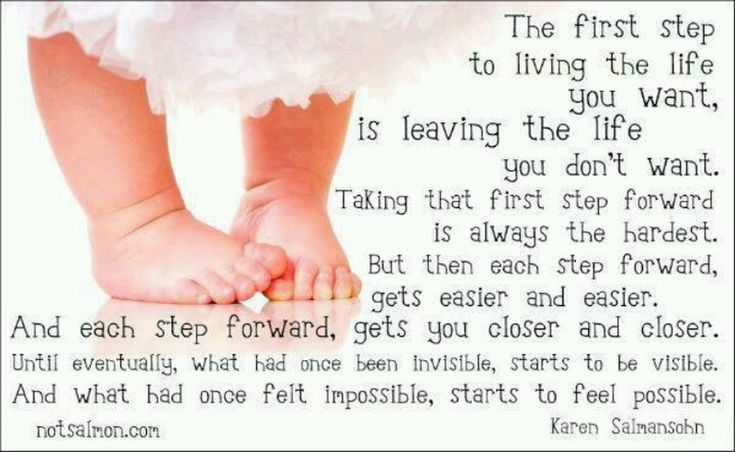 In this bottle-feeding position, baby’s head rests in the crook of your arm as you hold her head and chest at a slight incline—close to your chest is great.
In this bottle-feeding position, baby’s head rests in the crook of your arm as you hold her head and chest at a slight incline—close to your chest is great.
• Hold baby upright. Instead of lying down, baby should be almost in a seated position, with his head on your chest or in the crook of your arm. “This position can work especially well for infants who have reflux,” Baker-Clark says. Tilt the bottle so the milk completely fills the nipple, since a nipple filled only halfway with milk may lead to baby gulping some air, which can lead to gassiness or reflux.
• Use a pillow. A nursing pillow can be helpful in keeping baby’s chest and head propped up at an angle. Bonus: It can give your arms a break too as you cradle baby in your lap.
• Switch sides. Regardless of whether you’re breastfeeding or bottle-feeding exclusively, switching baby from one side to another can help prevent your little one from developing a side preference and can give your arms a break. Switching sides can also naturally pace a feeding session and can give baby a chance to decide whether or not he’s full before the bottle is finished.
Switching sides can also naturally pace a feeding session and can give baby a chance to decide whether or not he’s full before the bottle is finished.
As baby gets older, she may toy with holding the bottle. That’s fine, if she wants to, but it’s not a developmental milestone. “She may want to hold the bottle at 6 months, so you can let her, but you should still be close by, holding her and supervising her,” O’Day says. And if baby doesn’t show any interest in holding her bottle? As long as she’s reached other developmental milestones, like reaching or grasping for toys, it’s totally normal if your older infant wants his bottle served to him.
What is Pace Feeding?
You may have heard of “pace feeding” and wondered how to bottle-feed a baby using this method. “Paced bottle-feeding is where you follow baby’s cues and allow for breaks,” Baker-Clark says. “Taking the bottle away and re-offering it benefits both breastfed and exclusively bottle-fed babies.”
Pace feeding helps babies learn to regulate their hunger and allows ample time for digestion.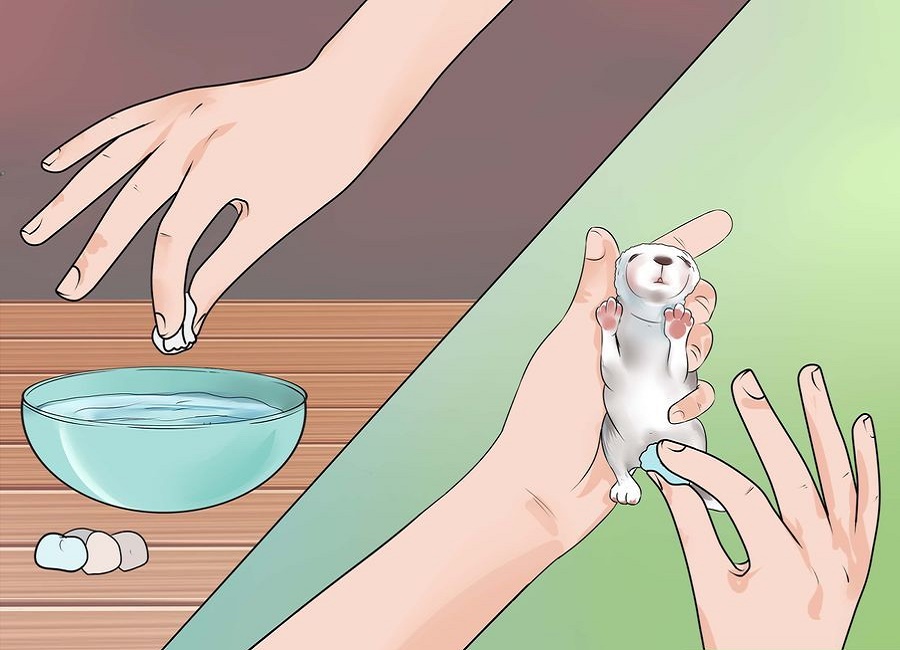 It can also cue you into baby’s biorhythm, O’Day says. You may find baby doesn’t uniformly eat the same size bottle at each time of day. For example, maybe he’s extra hungry in the morning and drinks 8 ounces, but prefers 4-ounce bottles post-nap. Paying attention to baby’s cues can help you clue into her unique needs and natural schedule.
It can also cue you into baby’s biorhythm, O’Day says. You may find baby doesn’t uniformly eat the same size bottle at each time of day. For example, maybe he’s extra hungry in the morning and drinks 8 ounces, but prefers 4-ounce bottles post-nap. Paying attention to baby’s cues can help you clue into her unique needs and natural schedule.
Plus, paced bottle-feeding makes a feeding session—which can last about 15 to 20 minutes—a great time for baby and his caregiver to bond. Here, some tips for how to pace feed:
• Hold the bottle at a horizontal angle. When the bottle is held horizontally, baby has to work to pull milk from the bottle, instead of the milk dripping into her mouth.
• Give baby some breaks. Instead of pulling the bottle away from baby’s mouth, lean the bottle back so the milk leaves the nipple. That way, baby has a chance to catch his breath. If he seems like he’s still rooting for milk, offer him more.
• Burp mid-feed. “If baby is pulling away, seems fussy or seems to be playing with the nipple with her mouth, give her a burp,” O’Day says. Then offer the bottle again.
“If baby is pulling away, seems fussy or seems to be playing with the nipple with her mouth, give her a burp,” O’Day says. Then offer the bottle again.
How to Get Baby to Take a Bottle
Even if you’re planning to exclusively breastfeed, at some point you’ll likely need some pointers on how to get baby to take a bottle. “I tell my clients to introduce baby to a bottle once breastfeeding has been established, which depends on each mother-baby dyad, but on average, it’s around one month,” O’Day says. “Even if they’re not planning to regularly bottle-feed, doing so can give peace of mind if an emergency comes up, and can also be a way for mom to get a break.”
Some babies take a bottle no problem—after all, sucking is an instinctive reflex, which is why bottle-fed babies tend to get the hang of it in the first few days of life. But other breastfed babies may initially be reluctant to take a bottle. And sometimes breastfed babies have no issue taking a bottle when they’re one month old, but if a bottle hasn’t been regularly offered, by 3 or 4 months of age, they’re less happy to accept a bottle.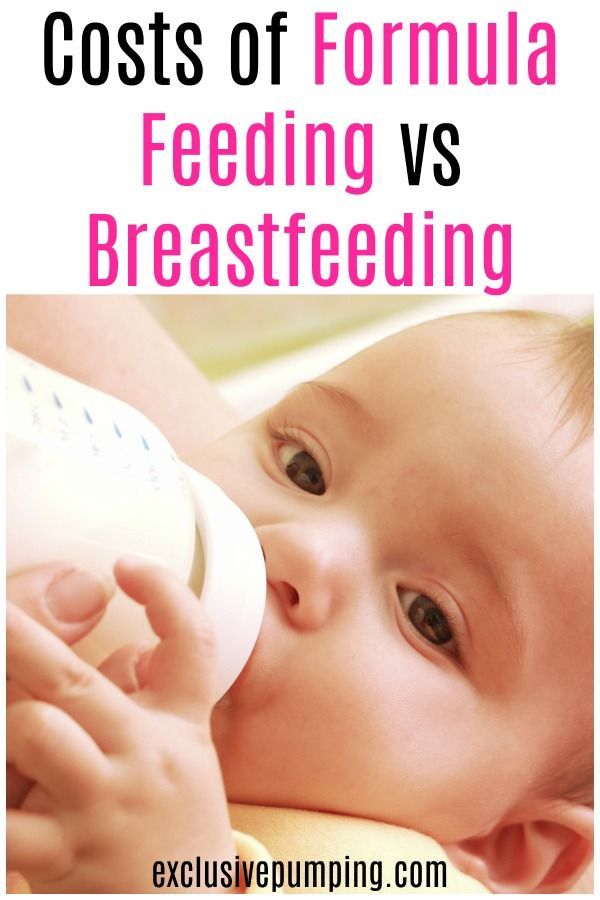 Bottle resistance is pretty common, but luckily there are some tried-and-true tips for what to do when baby is refusing a bottle.
Bottle resistance is pretty common, but luckily there are some tried-and-true tips for what to do when baby is refusing a bottle.
• Offer often. Even if you’re breastfeeding, O’Day recommends giving baby at least one bottle a week, once breastfeeding has been established. “That way it’s part of their routine, so they’re less likely to resist it,” she says.
• Don’t offer it when baby is starving. If you’re regularly nursing your infant, O’Day suggests offering a bottle in between nursing sessions. “If they’re too hungry, they may be too worked up to take a bottle. If they’re calm and not super hungry, they may take it,” she explains.
• Let others try bottle-feeding. Some moms have success leaving the house and allowing their partner to try feeding baby a bottle. Again, try it at a time that’s not baby’s “must-feed” time.
• Don’t get frustrated. If baby isn’t taking the bottle, O’Day suggests putting it down and trying again later rather than forcing it, which can make both you and baby upset.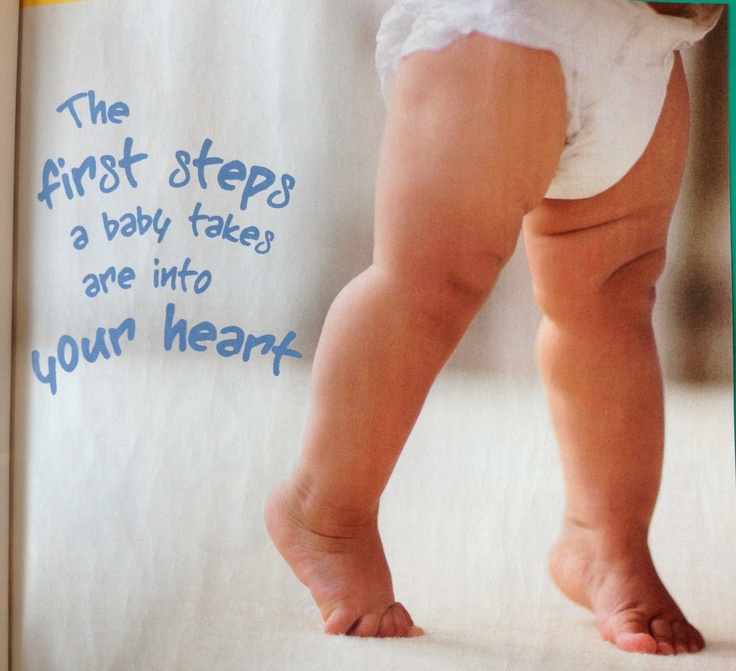
• Ask for help. A lactation consultant can suggest some techniques to help get even the most resistant bottle-feeders to accept a bottle. They may check your infant’s mouth and tongue for any latch problems that could contribute to the difficulty, suggest the best bottle for your infant, troubleshoot any behavioral issues or offer alternate nutritive methods, such as cup- or syringe-feeding.
When to Wean Baby Off the Bottle
The American Academy of Pediatrics recommends parents stop offering bottles by 18 months due to tooth decay concern, but it’s smart to talk with your pediatrician about exactly when baby should wean from the bottle around the 9-month mark, O’Day says. “How and when to wean depends on how much table food baby is eating, any developmental concerns and your pediatrician’s assessment,” she says. Note, though, that cow’s milk shouldn’t be introduced until baby is 12 months old.
When baby is around 6 months old, offer a sippy cup or straw cup for water, O’Day says, since learning to drink from cups can help make the transition from bottles seamless.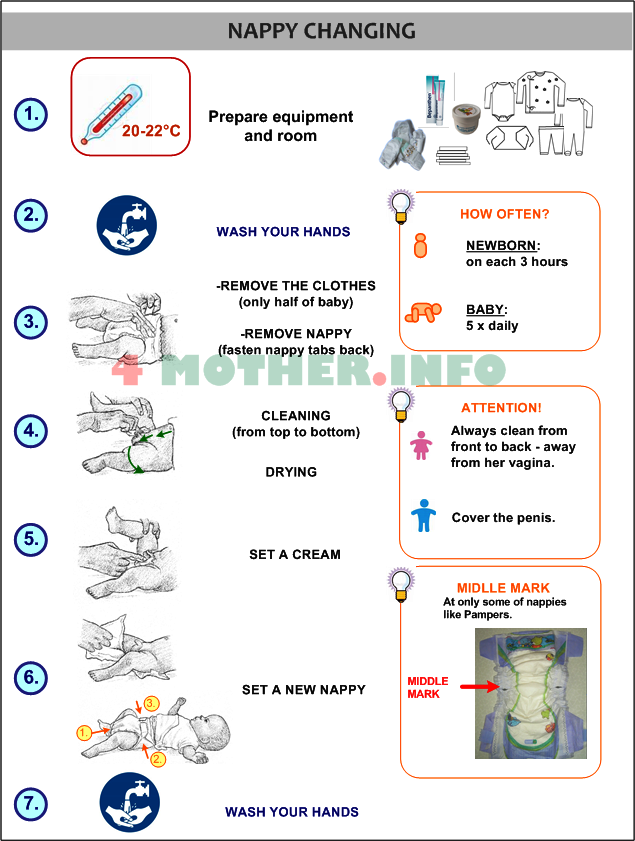 Some babies have no problem giving up the bottle, while others may require more time to make the transition, but looping in your pediatrician or lactation consultant can help make sure you’re all on the right track.
Some babies have no problem giving up the bottle, while others may require more time to make the transition, but looping in your pediatrician or lactation consultant can help make sure you’re all on the right track.
Whether you’re breastfeeding and offering the occasional bottle, combo-feeding or exclusively bottle-feeding, you might hit some bumps along your bottle-feeding journey. But there are ways to navigate through any problems that arise. If you’re struggling to find the best baby bottle for your child, need some pointers on how to bottle-feed a baby in an optimal position or encounter a full-on bottle strike, reach out to your pediatrician or lactation consultants for guidance.
Published August 2018
Please note: The Bump and the materials and information it contains are not intended to, and do not constitute, medical or other health advice or diagnosis and should not be used as such. You should always consult with a qualified physician or health professional about your specific circumstances.
Plus, more from The Bump:
14 Best Bottles for Every Feeding Need
Pumping 101: How to Pump Breast Milk
The Best Baby Formulas for Your Child’s Needs
Feeding Your Newborn (for Parents)
How you feed your newborn is the first nutrition decision you make for your child. These guidelines on breastfeeding and bottle feeding can help you know what's right for you and your baby.
Breast or Bottle?
The American Academy of Pediatrics (AAP) recommends that babies be breastfed exclusively for about the first 6 months. After they start on solid foods, babies should breastfeed through the first year of life and even beyond, if desired.
But breastfeeding isn't possible or preferable for all new moms. Deciding to breastfeed or bottle feed a baby is usually based on the mother's comfort level with breastfeeding and her lifestyle. In some cases, breastfeeding may not be recommended for a mom and her baby. If you have any questions about whether to breastfeed or formula feed, talk to your pediatrician.
Remember, your baby's nutritional and emotional needs will be met whether you choose to breastfeed or formula feed.
Benefits of Breastfeeding
Breastfeeding your newborn has many benefits. Perhaps most important, breast milk is the perfect food for a baby's digestive system. It has the nutrients that a newborn needs, and it’s easily digested. Commercial formulas try to imitate breast milk, and come close, but can't match it exactly.
Breast milk has
antibodiesthat help protect babies from many infections, including diarrhea and ear and lung infections. Breastfed babies are less likely to develop medical problems such as diabetes, high cholesterol, asthma, and allergies. Breastfeeding also might make a child less likely to become overweight.
Breastfeeding is great for moms too. It burns calories, so can help nursing moms lose the weight gained during pregnancy. Breastfeeding also may offer protection from breast cancer and ovarian cancer.
Some moms find breastfeeding easier and quicker than formula feeding — it needs no preparation, and you don't run out of breast milk in the middle of the night. Also, breastfeeding costs little. Nursing mothers do need to eat more and may want to buy nursing bras and pads, a breast pump, or other equipment. But these expenses are generally less than the cost of formula.
Breastfeeding meets a variety of emotional needs for both moms and babies. The skin-to-skin contact can enhance the emotional connection, and providing complete nourishment can help new moms feel confident in their ability to care for their newborn.
Limitations of Breastfeeding
With all the good things known about breastfeeding, why doesn't every mother choose to breastfeed?
Breastfeeding requires a big commitment from a mother. Some new moms feel tied down by the demands of a nursing newborn. Because breast milk is easily digested, breastfed babies tend to eat more often than babies who are fed formula. This means moms can be in demand as often as every 2 or 3 hours in the first few weeks. This can be tiring, but it's not long before babies feed less often and sleep longer at night.
This means moms can be in demand as often as every 2 or 3 hours in the first few weeks. This can be tiring, but it's not long before babies feed less often and sleep longer at night.
Some new mothers need to get back to work outside the home or separate from their babies from time to time for other reasons. Some opt for formula feeding so other caregivers can give the baby a bottle. Mothers who want to continue breastfeeding can use a breast pump to collect breast milk to be given in a bottle, so their babies still get its benefits even when mom isn't there to breastfeed.
Fathers and other family members may want to share in feeding the baby. When mom is breastfeeding, dad or siblings may want to stay close by. Helping mom get comfortable, or providing a burp cloth when needed, will let them be part of the experience.
When breastfeeding is going well, other family members can help by giving the baby pumped breast milk in a bottle when mom needs a break.
Some moms may feel embarrassed or worried about breastfeeding. These feelings usually end after a successful breastfeeding process is set. It can help to get advice from those who've gone through the experience. Most hospitals and birthing centers offer in-depth instruction on breastfeeding to new moms. Your pediatrician, nurse practitioner, or nurse can answer questions or put you in touch with a lactation consultant or a breastfeeding support group.
These feelings usually end after a successful breastfeeding process is set. It can help to get advice from those who've gone through the experience. Most hospitals and birthing centers offer in-depth instruction on breastfeeding to new moms. Your pediatrician, nurse practitioner, or nurse can answer questions or put you in touch with a lactation consultant or a breastfeeding support group.
In some cases, a mother's health may affect her ability to breastfeed. Moms getting chemotherapy for cancer and those who have HIV should not breastfeed, for example.
If you have a medical condition or take any medicines regularly, talk with your doctor about whether it's OK to breastfeed. If you have to stop nursing temporarily, continue to pump breast milk to maintain milk production. If you or your baby are sick, continue to breastfeed if you can. Talk to the doctor if you have any concerns.
In some situations, it may not possible to breastfeed, such as when a baby is very sick or born early.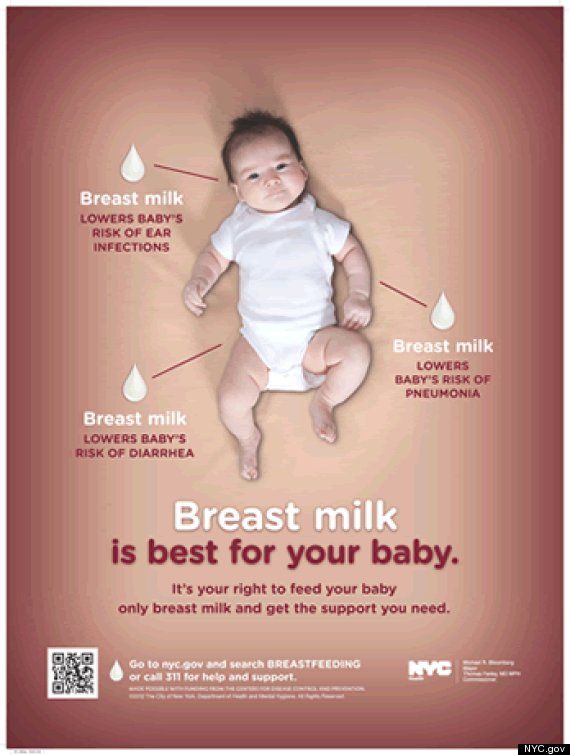 Mothers should talk with their baby's doctor about expressing and storing milk. Often, a baby who can't breastfeed can get breast milk through a feeding tube or bottle.
Mothers should talk with their baby's doctor about expressing and storing milk. Often, a baby who can't breastfeed can get breast milk through a feeding tube or bottle.
Some moms who have inverted nipples may have trouble breastfeeding, but a lactation consultant usually can help them overcome this. Likewise, women who have had plastic surgery on their breasts should be able to successfully breastfeed. Talk with your doctor if you have any concerns.
Hold off on pacifiers or bottles until your baby has gotten used to and is good at breastfeeding. Lactation professionals recommend waiting until a baby is about 3–4 weeks old before offering artificial nipples of any kind (including pacifiers).
Benefits of Formula Feeding
Commercially prepared infant formula is a nutritious alternative to breast milk. Bottle feeding can offer more freedom and flexibility for moms, and make it easier to know how much the baby is getting.
Because babies digest formula more slowly than breast milk, a baby who is getting formula may need fewer feedings than one who breastfeeds. Formula feeding also can make it easier to feed the baby in public, and lets the father and other family members help feed the baby, which can enhance bonding.
Formula feeding also can make it easier to feed the baby in public, and lets the father and other family members help feed the baby, which can enhance bonding.
Limitations of Formula Feeding
Just as breastfeeding has its unique demands, so does bottle feeding. Bottle feeding takes organization and preparation, especially if you want to take your baby out. Store-bought formula can be pretty expensive, but do not try to make your own formula at home.
It's important to make sure that you have enough formula on hand, and bottles that are clean and ready to be used.
Here are a few guidelines for formula feeding:
- Carefully follow directions on the label when preparing formula. Do not add more water than directed.
- Bottles left out of the refrigerator longer than 1 hour and any formula left in the bottle that a baby doesn't finish should be discarded.
- Prepared bottles of formula can be stored in the refrigerator up to 24 hours and carefully warmed just before feeding.
 You don't have to warm formula, but most babies prefer it.
You don't have to warm formula, but most babies prefer it. - A bottle of formula can be warmed by holding it in running warm water or setting it in a pan of warm water. A bottle of formula (or breast milk) should never be warmed in a microwave. The bottle can heat unevenly and leave "hot spots" that can burn a baby's mouth.
How Often Do Newborns Eat?
Your newborn will nurse about 8 to 12 times per day during the first weeks of life. In the beginning, mothers may want to try nursing 10–15 minutes on each breast, then adjust the time as needed.
Breastfeeding should be on demand (when your baby is hungry), which is generally every 1–3 hours. As newborns get older, they'll nurse less often and have longer stretches between feedings. Newborn babies who are getting formula will likely take about 2–3 ounces every 2–4 hours. Newborns should not go more than about 4–5 hours without feeding.
Signs that babies are hungry include:
- moving their heads from side to side
- opening their mouths
- sticking out their tongues
- placing their hands and fists to their mouths
- puckering their lips as if to suck
- nuzzling against their mothers' breasts
- crying
A feeding schedule is not necessary — you and your baby will get into a routine.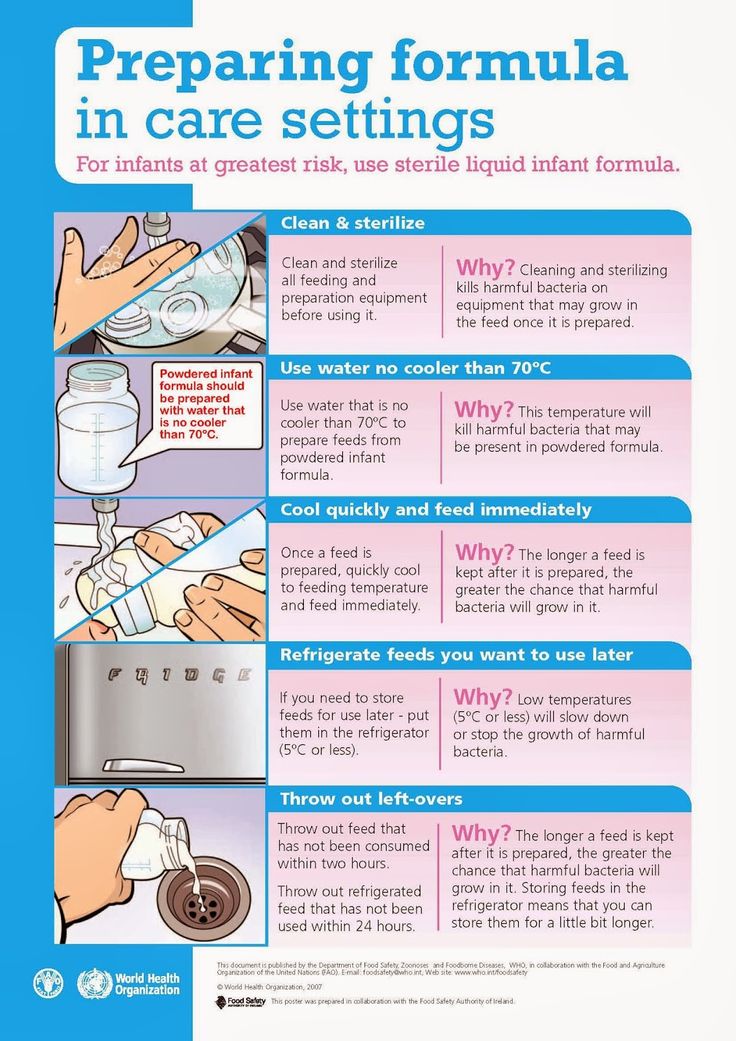 Babies know (and will let their parents know) when they're hungry and when they've had enough. Watch for signs that your baby is full (slowing down, spitting out the bottle or unlatching from breast, closing the mouth, turning away from the breast or bottle) and stop the feeding when these signs appear.
Babies know (and will let their parents know) when they're hungry and when they've had enough. Watch for signs that your baby is full (slowing down, spitting out the bottle or unlatching from breast, closing the mouth, turning away from the breast or bottle) and stop the feeding when these signs appear.
As babies grow, they begin to eat more at each feeding and can go longer between feedings. There may be other times when your infant seems hungrier than usual. Continue to nurse or feed on demand. Nursing mothers need not worry — breastfeeding stimulates milk production, and your supply of breast milk will adjust to your baby's demand for it.
Is My Newborn Getting Enough to Eat?
New parents often worry about whether their babies are getting enough to eat.
Babies are getting enough to eat if they:
- seem satisfied
- have about 6–8 wet diapers a day
- have regular bowel movements (poops)
- sleep well
- are alert when awake
- are gaining weight
A baby who is fussing, crying, seems hungry, does not appear satisfied after feeding, and has fewer wet diapers may not be getting enough to eat. If you're concerned that your baby isn't getting enough to eat, call your doctor.
If you're concerned that your baby isn't getting enough to eat, call your doctor.
Most infants "spit up" a small amount after eating or during burping, but a baby should not vomit after feeding. Vomiting after every feeding might be a sign of an allergy, digestive problem, or other problem that needs medical care. If you have concerns that your baby is spitting up too much, call your doctor.
Should Newborns Get Nutritional Supplements?
Breast milk has the right combination of vitamins and easily absorbed iron for newborns. A healthy infant being nursed by a healthy mother doesn't need extra vitamins or nutritional supplements, with the exception of vitamin D. Breastfed babies should begin vitamin D supplements within the first few days of life, continuing until they get enough vitamin D-fortified formula or milk (after 1 year of age).
Breastfeeding mothers who follow vegetarian diets that do not include animal products need vitamin B12 supplements.
Iron-fortified formula has the right blend of vitamins and minerals for a baby, so supplements usually aren't needed.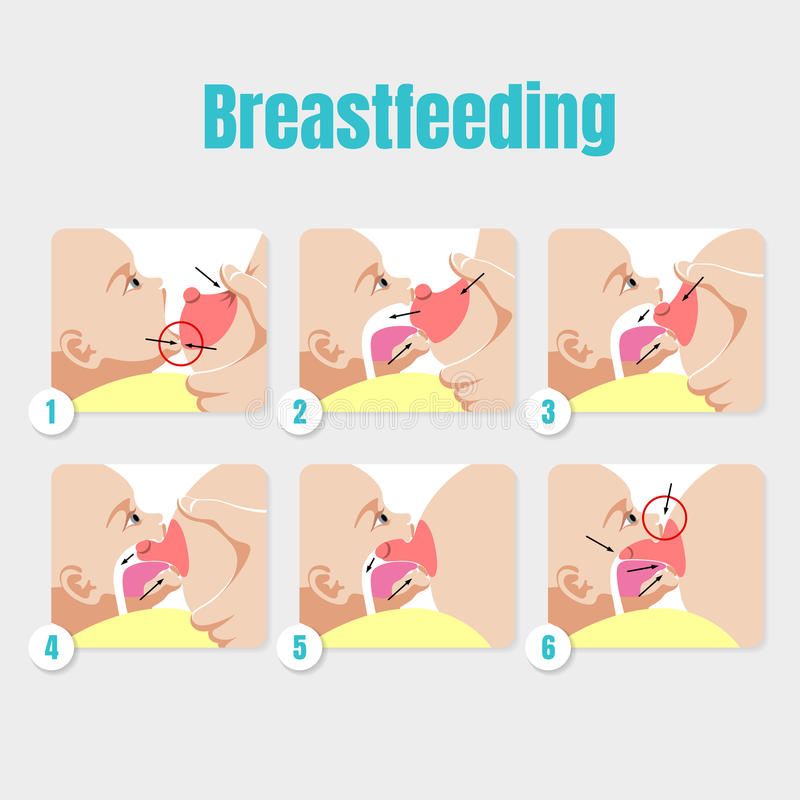 Infants drinking less than 1 liter, or about a quart, of formula a day may need a vitamin D supplement.
Infants drinking less than 1 liter, or about a quart, of formula a day may need a vitamin D supplement.
Water, juice, and other foods usually aren't necessary during a baby's first 6 months. Breast milk and formula provide everything babies need nutritionally until they start eating solid foods. Talk to your doctor if you have any questions about feeding your newborn.
Reviewed by: Mary L. Gavin, MD
Date reviewed: February 2021
Postures for breastfeeding. Steps to health. Social project for children and parents, pediatricians
home > Baby care. Questions for the pediatrician > First month after childbirth >
Before you start learning nursing positions,
don't forget to read the Proper Attachment Technique section.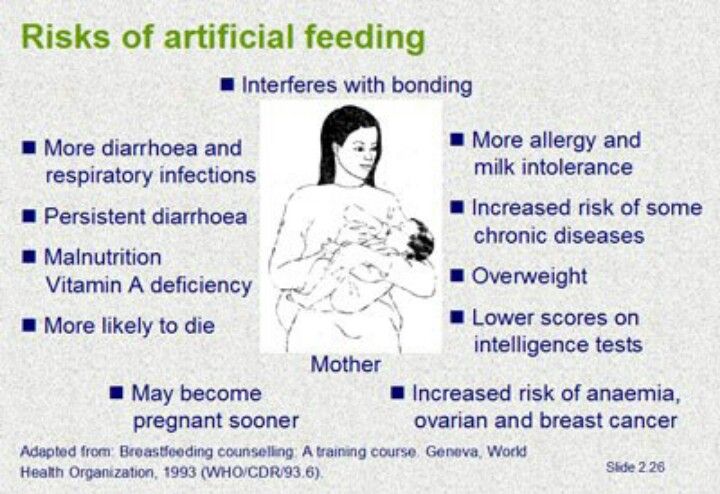
Sitting feeding
CradleOne of the most common postures. The baby is in the arms of the mother. The back of the baby’s head is placed in the elbow bend of the arm from the side of the “nursing” breast so that the top of the head does not rest against the arm. With the other hand, the mother supports the child behind the back. You can put a pillow on your knees or put your feet on a low stool. This will give additional support area for the child's torso. | |
Reverse cradleMom supports her head and back with her hand opposite to the “nursing” breast. In the "cradle" position, you can feed while standing, especially for mothers who cannot sit. This gives the mother the opportunity to lull the baby during feeding, as well as move slowly around the room. | |
Under arm pose, ball pose The position of the child in this position resembles an American football tackle. The ball pose is very good for breastfeeding problems: Cracked nipples . In this position, you can try to hide the place where the crack is located, because. the nipple will be positioned differently in the mouth. Incorrect chest grip. Under arm position makes it easier to control the grip on the chest. Lactostasis . During sucking, the lobes of the mammary gland are emptied more, towards which the baby's chin is turned. Considering that in this position, the mother has a free second hand, she can stir up, wake up the “lazy sucker”, who falls asleep during feeding. |
Side feeding
| This position is suitable for those women who cannot sit , as well as for feeding while sleeping or resting . Mom puts her head on the pillow, while the upper back should not be on the pillow. The back of the child’s head is in the elbow bend from the side of the “nursing” breast, with the mother’s hand she presses the child to her stomach, with the other hand she gives the breast. Another option is for the child to lie next to the mother, with her face turned and her whole body to her chest. The lower hand winds up to the level of the face. With her upper hand, the mother turns the body of the child towards her, fixing the back of the head. If necessary (the nose is below the nipple), you can put a small pillow or a towel folded several times under the baby's head. | |
| It is also possible to feed from the upper breast if the baby is placed on a higher pillow. Mom rolls over a little on her stomach so that the nipple is opposite the baby's nose, does not hang from above. The lower hand can be placed under the head or the head can be placed on a pillow. The lower arm should not be the main fulcrum, so that it does not get tired or numb. The upper hand is free, which makes it possible to fix the correct position of the child, to stroke the baby. The pose is convenient because it allows you to change breasts without turning over to the other side. This pose is also useful for lactostasis of that part of the mammary gland that is closer to the middle of the chest. | |
Pose "Jack" The child is positioned so that his legs are directed towards the mother's head. Mom is on her side. The head can be leaned on a hand or a pillow, which is more convenient for mom, because. the hand does not become numb, the neck does not tense up. You can put a long pillow behind your back. This position is especially convenient if the outflow of milk from the upper lobe is disturbed. |
Feeding lying on the back or semi-sitting
| This position is also called relaxed feeding, because. mother has the opportunity to relax, to rest. Mom lies on her back or half-sitting, the child is located on top, stomach to stomach, head slightly turned to the side. Mom supports the child with both hands, does not allow him to roll off her stomach. In this position, the baby can take the breast deeper, which makes it possible to regulate the flow of milk. This position is useful if the baby often "chokes" during feeding. In this position, the movements of the arms and legs of the child are limited, this allows overly active children to relax. |
Vertical feeding
| Feeding in an upright position is suitable for children who are prone to spitting up, as well as for older children. Posture options. Mom stands, sits the child on her thigh, “like on a horse” or on her side. | |
| In the cradle position , you can feed while standing, especially for mothers who cannot sit. This gives the mother the opportunity to lull the baby during feeding, as well as move slowly around the room. |
Hanging over a child
| This pose is recommended for special occasions: “walking away” from the bottle, lactostasis in the mother. Under the influence of gravity, milk flows more easily from the lobules, which reduces stagnation, as well as "facilitates" sucking for children who are accustomed to a bottle. The pose should not be used in "everyday feeding", because. Mom stands on all fours on the bed or next to the table above the child, leans on one or both elbows, the child needs to be turned slightly on its side so that it does not choke on milk. In this position, the child can be twirled in a circle, positioned so that the chin is turned towards the “stagnant” lobule. |
Levchuk Tatyana Olegovna,
Department of Children's Diseases FPO ZSMU
Breastfeeding is the first step to a healthy baby -
Breastfeeding is the first step to a healthy baby
Breastfeeding support week started on August 1st. Every year, on the initiative of the World Health Organization and the United Nations Children's Fund (UNICEF), more than 170 countries celebrate World Breastfeeding Week from 1 to 7 August.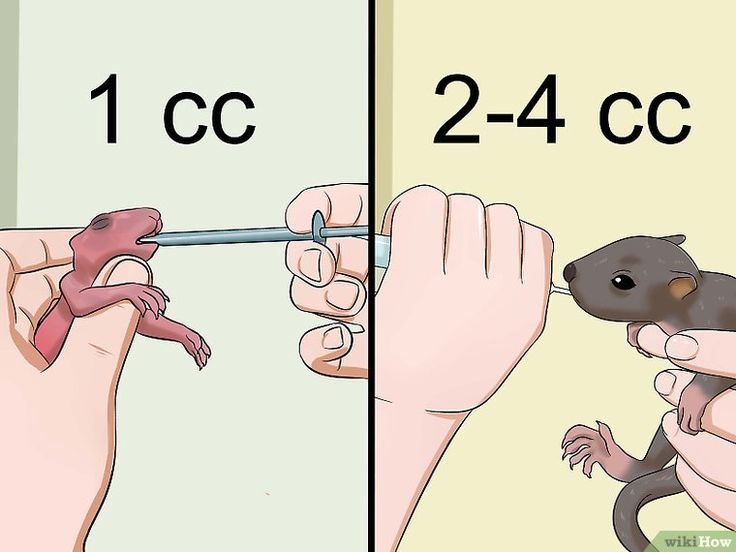 The event is held to promote and stimulate breastfeeding and improve the health of children around the world.
The event is held to promote and stimulate breastfeeding and improve the health of children around the world.
Larisa Petrovna Tandalova, head of the children's polyclinic of the District Clinical Hospital of Khanty-Mansiysk, gave a detailed answer on this topic for those who are just planning to become a mother, and spoke about the importance of breastfeeding, both for mother and child.
According to the Children's Polyclinic of the District Clinical Hospital, how many children receive mother's milk?
If we take children who were born in 2019 - 1350, according to statistics, this is approximately 80% (about 1100 children under 3 months) are exclusively breastfed, 20% of children were not breastfed for one reason or another, until 6 months approximately 860-870 - 62-65% of children receive exclusively breast milk, 15-20% of children continue to breastfeed in the second year of life. We comply with WHO standards, and correspond to the title of "Baby Friendly" hospital. More than 60% of children should be breastfed until 6 months of age.
More than 60% of children should be breastfed until 6 months of age.
What are the benefits of breastfeeding?
No matter how hard they try to convince manufacturers that they have brought the composition of milk formulas closer to the composition of human milk, this is not true. This is equivalent to comparing a person who walks with his legs and someone who walks on crutches. Can't be compared. Mother's milk is a unique product. And the most important difference between women's milk and all other substitutes is that it contains a factor of protection against infectious diseases, which is not found in adapted milk mixtures, milk contains a child's growth factor, more polyunsaturated fatty acids. In breast milk, the protein is in a split state and it is exactly as much as it is necessary for the child to receive at this particular age period. In fact, a child who receives breast milk does not need to work much, all that he receives while breastfeeding. much easier to digest. Hence the problems with the tummy for those who switch to artificial nutrition. Mother and child are a system, a relationship at the level of the brain. The body of a nursing mother reacts to changes on the part of the child, with the growth of the child, the composition of breast milk changes. If a baby gets colds, the mother naturally produces more protective antibodies in her milk, which protect the baby and help him get over the illness faster.
Hence the problems with the tummy for those who switch to artificial nutrition. Mother and child are a system, a relationship at the level of the brain. The body of a nursing mother reacts to changes on the part of the child, with the growth of the child, the composition of breast milk changes. If a baby gets colds, the mother naturally produces more protective antibodies in her milk, which protect the baby and help him get over the illness faster.
Which modern baby formula is close to breast milk?
All milk formulas are approximately the same, manufacturers are working to improve their quality, but it is impossible to say that we single out any manufacturer.
Is it true that breastfeeding prevents depression and strengthens the maternal instinct?
Of course, because any woman who has breastfed will say that this is an indescribable feeling. Many mothers describe this, especially at first, when the mother meets the child at the very first stages.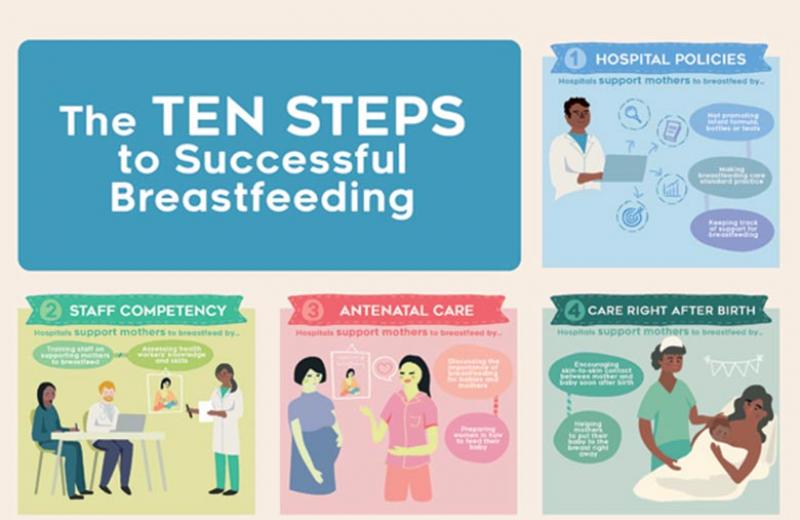 Of course, where without difficulties, but if a woman overcomes them from the beginning of breastfeeding, then then feeding brings both the child and the mother a lot of positive emotions, an invisible connection arises between the child and the mother. Why do you think children in their second year of life, receiving food, do not want to give up their mother's milk? In stressful situations, they immediately “grab” their chest, because it calms them down, they feel protected. Breastfeeding brings mother and baby closer.
Of course, where without difficulties, but if a woman overcomes them from the beginning of breastfeeding, then then feeding brings both the child and the mother a lot of positive emotions, an invisible connection arises between the child and the mother. Why do you think children in their second year of life, receiving food, do not want to give up their mother's milk? In stressful situations, they immediately “grab” their chest, because it calms them down, they feel protected. Breastfeeding brings mother and baby closer.
Are there specific feeding rules?
They exist, but all children are individual and I cannot say what should be done in this way. Each mother, following the rules of breastfeeding, develops an individual regimen for her child. Of course, it is not necessary to feed children randomly and often. A certain regime should be developed by the month. The main rule when feeding is to teach the child to properly grasp the nipple so that there are no cracks and maceration. The rest will come, everything will work out, the main thing is to believe and be patient.
The rest will come, everything will work out, the main thing is to believe and be patient.
Our hospital has a Young Mother's School, how long has it been in existence and what do young mothers learn there?
It has existed for a long time, it used to be called differently, but pediatricians have always talked about the benefits of breastfeeding. The "School of Breastfeeding" and "School of Motherhood" are conducted by a pediatrician who deals with young children. This school has many sections, including teaching how to properly attach a baby to the breast, talk about the features of the neonatal period, talk about possible difficulties, because a mother can experience lacto crises, lacto stasis. The school tells at what age periods of the child they can appear and how to deal with them. We have developed special brochures on breastfeeding, all the difficult moments are spelled out. In general, all our nurses are trained and know how to help a young mother.
How should a mother eat to breastfeed?
Eat right, a woman should not eat for two, her diet should be rational. There is a certain set of products that a woman is not recommended to use while breastfeeding. She removes carbonated drinks from the diet, foods that can cause an allergic reaction - chocolate, citrus fruits, honey, nuts, fish, seafood. I emphasize that alcoholic beverages and tobacco are strictly prohibited.
There is a certain set of products that a woman is not recommended to use while breastfeeding. She removes carbonated drinks from the diet, foods that can cause an allergic reaction - chocolate, citrus fruits, honey, nuts, fish, seafood. I emphasize that alcoholic beverages and tobacco are strictly prohibited.
What are the reasons why a mother cannot breastfeed?
Due to illness of mother or child.
But such moments are few, in principle, any woman can breastfeed a child. It happens that a child is born with certain problems, or is born very weak, premature, and due to his condition, he will not be able to breastfeed only at first, but there are heroic mothers who make every effort to keep breastfeeding.
Until what age is it recommended to breastfeed?
You need to feed up to a year, and after a year, slowly wean it, it starts to interfere with mother and child. By the year, nature itself is already preparing the child for a gradual rejection of the breast.

 The child is placed under the arm on the side. The head should be at chest level (remember, the nose is at the level of the nipple), for this you can use pillows (regular or for pregnant women), a blanket folded several times. Hold the back of the head with the palm of your hand on the side of the “nursing” breast.
The child is placed under the arm on the side. The head should be at chest level (remember, the nose is at the level of the nipple), for this you can use pillows (regular or for pregnant women), a blanket folded several times. Hold the back of the head with the palm of your hand on the side of the “nursing” breast. 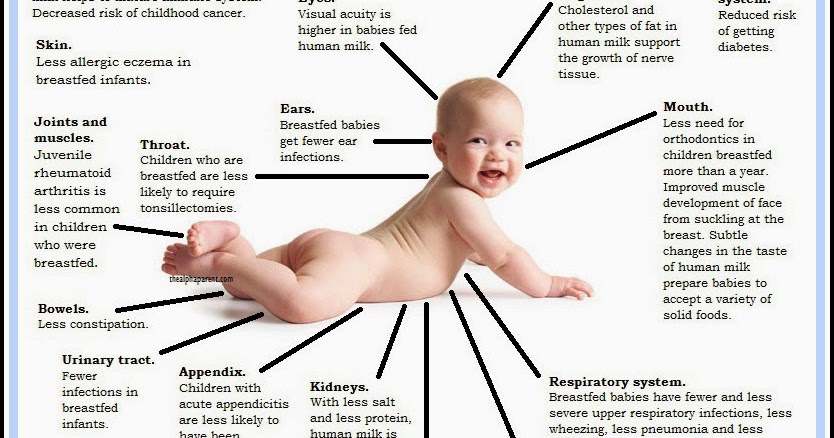
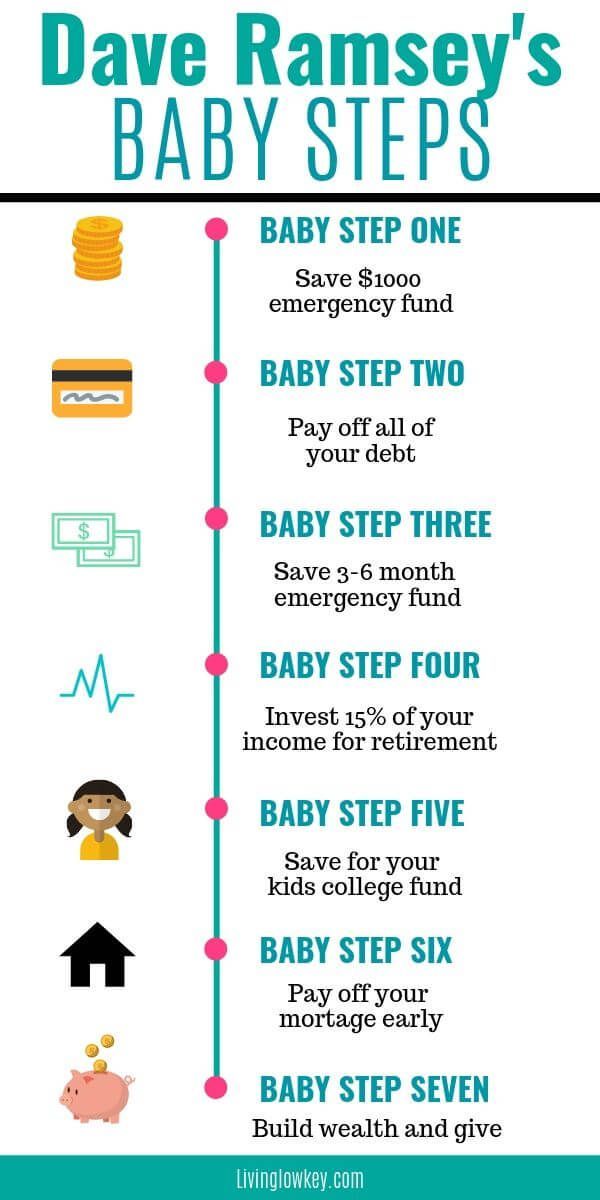
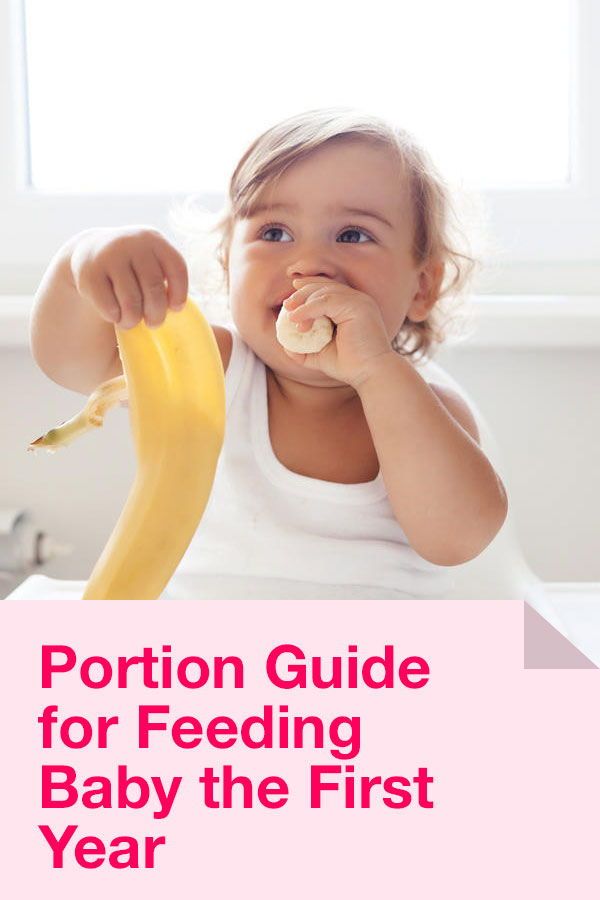
 Mom can communicate with the baby during feeding, look into each other's eyes.
Mom can communicate with the baby during feeding, look into each other's eyes.  in this position, the mother quickly gets tired (reliance on the elbow or elbows, the neck is in tension), and the child can "roll, slide off the chest."
in this position, the mother quickly gets tired (reliance on the elbow or elbows, the neck is in tension), and the child can "roll, slide off the chest." 






